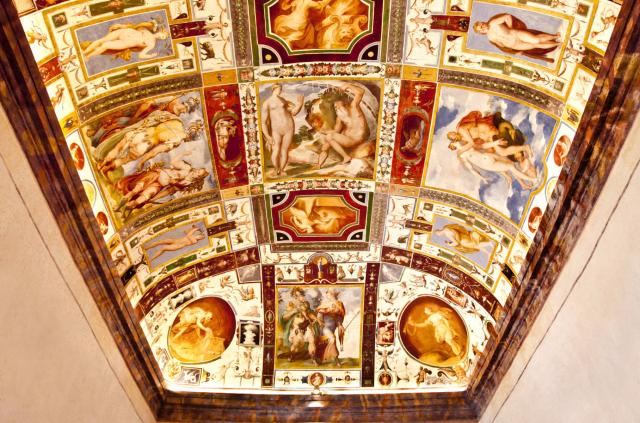The Aeneid Hall
Corgna Palace and the Medieval Fortress

The scenes decorating the hall represent the myth of Aeneas, legendary hero who, after returning from the Trojan war, founded the city of Rome. Promoter of the cycle was Diomede Della Penna who, in the exaltation of the Trojan prince, celebrated his role as governor. Some of the deities represented – Ceres, goddess of Earth fertility, Vulcan, god of fire and metals linked to craftsmanship, and Venus, goddess of beauty – allude to the role of patron of arts and to the condition of economic prosperity that Chiugi lived under Diomede’s government.
Author of the decorations, among which the scenes with Venus, Aeneas and Acatas between Ceres and Vulcan and Venus asking Vulcan for the weapons for Aeneas, is one of Circignani’s collaborators, a completely autonomous figure identified as Giovanni Antonio Pandolfi. The creator of a particularly fluid and ductile painting, he was at Castiglione del Lago before 1575, the year in which he was called by Cardinal Fulvio della Corgna to decorate the sacristy of the Duomo at Perugia.